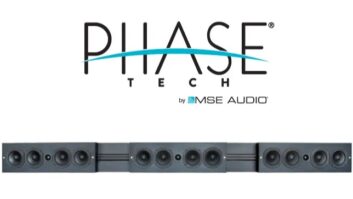Today’s consumers are faced with many different choices for their digitally connected home.
Additionally, consumers must deal with the problem of simplifying the increasingly complex home entertainment set-ups — with TVs, set-top boxes, DVRs and gaming consoles. That said, after ease-of-use and seamless operation, consumers care most about image quality when buying a new HDTV or A/V product. In fact, a recent survey of nearly 2,000 consumers, conducted worldwide by an independent research company, showed that 75% of respondents cared most about the highest quality wireless connectivity in one room, as opposed to video with degraded image quality through the whole home.While consumers can care less about how this technology is delivered to them, it’s up to the consumer electronics industry to address the previously cited consumer concerns and deliver the next frontier of home entertainment – wireless A/V.
One thing all CE manufacturers look for in wireless high-definition technologies is the ability to support the highest quality, lossless image that is also scalable to future HDTV technologies. Resolution improvements, plus simplified and enhanced consumer experiences are also a priority with their home A/V products. With the recent demise of UWB, the industry is left today with 60GHz technology as the natural successor, representing a giant leap forward in bandwidth and application breadth potential. In fact, 60GHz solutions are available to consumers today from consumer electronics manufacturers using the WirelessHD® specification.
The 60GHz Opportunity
60GHz promises extremely high data rates, along with better reliability and improved use of the wireless spectrum. It is also currently the only wireless technology capable of the multi-gigabit speeds the constantly increasing resolutions of HDTVs demand – 4Gbps data rates are available today (ten times faster than WiFi) with theoretical data limits of up to 25 Gbps!.
The most common resolution in HDTVs today is 1080p, which requires 3Gbps for an uncompressed and lossless video signal. 60GHz is clearly the new darling of the wireless industry, with new companies and researching institutions touting their experiments with 60GHz more and more frequently. Another benefit of 60GHz is its ability to migrate to the PC market, helping advance PC and CE convergence. Soon consumers will be able to connect their laptop wirelessly to printers, monitors, servers, and video cameras, streamlining the consumer experience.
Despite 60GHz multi-gigabit speeds, the technology has a few hurdles to consider. Directionality and line-of-sight limitations are the two issues when creating 60GHz technology. For example, obstructions like furniture can interrupt traditional antenna signals from source to target. As the first company to break the 60GHz barriers of directionality with its OmniLink60TM technology, SiBEAM developed intelligent beam steering technology – in short, it finds the optimal path with the least signal lost, and uses both direct and reflected signals to reach the recipient. This delivers a strong signal that can deliver a high quality image. WirelessHD uses this technology in order to create a flawless picture and consumer experience.
The 60GHz Arena
The WirelessHD Consortium was introduced in 2006, with almost 40 members including Broadcom, Intel, LGE, Panasonic, Philips, NEC, Samsung, Sharp, Sony, SiBEAM, and Toshiba. The Consortium’s goal is to promote a best-in-class wireless technology, which is lossless and based on the 60GHz frequency. The WirelessHD specification defines a single technology that can support Full HD 1080p, instantaneous file transfers, wireless display and docking and streaming of HD media on a variety of devices. First applications enable simple connectivity among several digital devices which are part of the home multimedia network, such as HDTVs, Blu-ray DVD players, set top boxes, gaming consoles and more. Future applications will include notebooks, and other mobile devices.
Each founding member of the WirelessHD Consortium contributed to the specification. SiBEAM specifically provided the key technology for portions of the MAC, PHY and phased antenna array beam forming. WirelessHD has the highest data rates, reduced latency, and more stable video transmission than any of the other wireless A/V technologies. It is also the only standardized technology in the industry with a test for specification conformance and interoperability among different manufacturer’s WirelessHD-based products. Best for in-room connections, WirelessHD offers actual data rates of 4Gbps at every point in the connection.
WirelessHD is ideal for consumers seeking a simple way to add and remove several home A/V devices. Applications include in-room multimedia networks, streaming HD content, wireless gaming, virtual docking, and PC Sync’n GoTM applications.
IEEE 802.11ad
This IEEE working group is also developing a high-throughput standard for data based on the 60GHz frequency as a follow-on to Wi-Fi. The physical limitations of the 2.4 and 5GHz frequencies make it impossible to reach even 1Gbps of actual data rate. 60GHz is the only option at this point. Details on the specification of the 802.11ad standard are not formally available yet, but IEEE insiders estimate to make its’ 60GHz debut in 2013.
The Wireless Future of the Digitally Connected Home
The advent of the ultra slim HDTV, and the plethora of home entertainment technologies, is enriching the consumers’ home entertainment experience. The various wireless technologies we’ve outlined here will soon be available in product form, if not already on the market, offering new flexibility and variety to consumers. When all is said and done, however, image quality is the most important feature of these technologies, and the solution that brings the best quality and best user experience (ease of setup and management, interoperability, etc.) to the table will rise above its competitors.













